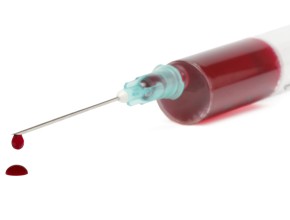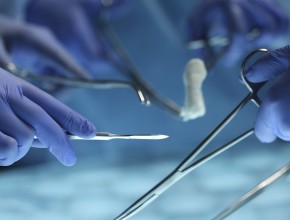Probiotics and prevention of C difficile-associated diarrhea
Prophylactic use of probiotics prevents Clostridium difficile-associated diarrhea (CDAD) among patients taking antibiotics.
This broad review examined the impact of probiotics (any type, any dose) on the development of CDAD in adults and children. It included both inpatients and outpatients. Most probiotics were in the form of commercial products, but some were in the form of yogurt or fermented milk.
In the broadest analysis of all patients who completed studies, the incidence of CDAD was decreased from 4.0% in the placebo or no treatment group to 1.5% in the probiotic group (risk ratio [RR], 0.40; 95% CI, 0.30-0.52; moderate Quality of Evidence [QoE]) despite almost equal probability of detection of C difficile in stool (17.0% and 15.5%, respectively).
The beneficial effect of probiotics seemed to be most pronounced in populations at highest risk of CDAD. With the baseline risk of at least 5%, the use of probiotics was associated with a 70% reduction in the number of cases, from 11.6% to 3.1% (RR, 0.30; 95% CI, 0.21-0.42; moderate QoE), with 81 fewer patients developing CDAD per 1,000 patients treated. Both the relative and absolute effects were lower and not statistically significant in groups with a lower baseline risk of CDAD: in those with a baseline risk of 3% to 5%, the RR was 0.53 (95% CI, 0.16-1.77), whereas in the those with a baseline risk of 0% to 2%, the RR was 0.77 (95% CI, 0.45-1.32).
The authors found no convincing evidence of differences among types or doses of probiotics and their microbiological contents and have ascribed the possible superior effect of Lactobacillus acidophilus with Lactobacillus casei in comparison with Lactobacillus rhamnosus to the play of chance.
The most common adverse events included abdominal cramping, nausea, fever, soft stools, flatulence, and taste disturbance, with the overall frequency numerically lower among patients taking probiotics (very low QoE).
The authors remind us that despite the overall evidence of benefit, studies of different preparations in different populations are ongoing.
PCI of culprit lesion only in MI with cardiogenic shock
Hochman JS, Katz S. Back to the Future in Cardiogenic Shock - Initial PCI of the Culprit Lesion Only. N Engl J Med. 2017 Dec 21;377(25):2486-2488. doi: 10.1056/NEJMe1713341. Epub 2017 Oct 30. PubMed PMID: 29083965.
In the setting of myocardial infarction (MI) with cardiogenic shock, performing percutaneous coronary intervention (PCI) on the culprit vessel only was associated with lower mortality than performing PCI on all severely affected coronary vessels.
Over 700 patients with either ST-segment elevation or non-ST-segment elevation MI, cardiogenic shock, and at least 2 major vessels with >70% stenosis were scheduled to undergo either PCI of all severely affected vessels (including those chronically occluded) or PCI involving only the vessel identified as culprit. Cardiogenic shock was defined as a systolic blood pressure <90 mm Hg for over 30 minutes or the need to use catecholamine therapy to maintain a systolic blood pressure ≥90 mm Hg. Hypotension was accompanied by signs of pulmonary congestion plus at least one sign of hypoperfusion (altered mental status, cold and clammy periphery, oliguria, or a lactate level >2 mmol/L).
The most common culprit artery was the left anterior descending artery (~40%) followed by right coronary artery (>25%), left circumflex artery (>20%), and left main artery (>5%). In most patients arterial access was obtained through the femoral artery. Around 95% of patients in both groups received a stent in the culprit lesion (>90% were drug-eluting stents).
In the culprit-vessel only PCI group, 43.3% of patients died versus 51.6% in the multivessel PCI group (relative risk [RR], 0.84; 95% CI, 0.72-0.98). The need for renal replacement therapy occurred in 11.6% of patients in the culprit-vessel intervention group versus 16.4% in the multivessel group (RR, 0.71; 95% CI, 0.49-1.03). At least one of those two outcomes was thus less common among patients in the culprit-vessel PCI only group: 45.9% versus 55.4% (RR, 0.83; 95% CI, 0.71-0.96). Planned or urgent repeat revascularization was performed in 21.5% versus 3.8% of patients. Among patients surviving to discharge, about 98% were receiving acetylsalicylic acid, 93% statins, 90% beta-blockers, and >85% angiotensin-converting enzyme inhibitors or angiotensin receptor blockers; the vast majority, if not all, were on dual antiplatelet therapy.
The authors stressed that their results differ from those obtained among patients with acute MI without concomitant cardiogenic shock, but pointed out that in the population without shock, as opposed to the population from the current study, repeat revascularization was counted as an adverse event.
SCCM/ESICM guidelines for diagnosis and management of CIRCI: Part 1. Diagnosis
Annane D, Pastores SM, Rochwerg B, et al. Guidelines for the Diagnosis and Management of Critical Illness-Related Corticosteroid Insufficiency (CIRCI) in Critically Ill Patients (Part I): Society of Critical Care Medicine (SCCM) and European Society of Intensive Care Medicine (ESICM) 2017. Crit Care Med. 2017 Dec;45(12):2078-2088. doi: 10.1097/CCM.0000000000002737. PubMed PMID: 28938253.
These guidelines provide recommendations and suggestions (conditional or weak recommendations) on the diagnosis of critical illness-related corticosteroid insufficiency (CIRCI) among critically ill patients and use of corticosteroids in the management of the variety of critical care conditions where CIRCI may be present.
Strong recommendations are issued when most individuals would want the recommended course of action, clinicians should use this course of action in most situations, and recommendations could serve as policy and a performance measure. With weak recommendations (suggestions), the majority of patients would want the suggested course of action but many would not, clinicians should tailor their actions to individual circumstances and patient’s preferences, and the subject of policy may be the consideration of a given intervention rather than its institution. (The concepts of strong and weak recommendations are used according to the GRADE, or Grading of Recommendations, Assessment, Development, and Evaluation, method; see our introduction to the GRADE system.)
In the first part of their publication, the authors described the available evidence (quality was mostly low [L] or very low [VL], occasionally moderate [M]), and, taking into account the overall lack of high confidence in the data, issued mostly weak recommendations (suggestions). For the diagnosis of CIRCI, these include:
- No suggestion of superiority of one of the commonly used CIRCI diagnostic tests (a random plasma cortisol <10 microgram/dL [276 nmol/L], or a change in the cortisol level <9 microgram/dL [248 nmol/L] 60 minutes after injecting 250 microgram of cosyntropin [synthetic adrenocorticotropic hormone, ACTH]). The authors reported their inability to reach consensus on which test to use (thus effectively allowing either to be used in the diagnostic process).
- Suggestion to use the total cortisol level rather than the free plasma serum cortisol level (VL), salivary cortisol level (VL), or corticotropin level (L) for diagnosing CIRCI.
- Suggestion to use a high dose (250 microgram) rather than a low dose (1 microgram) of ACTH while performing the stimulation test (L). The authors acknowledged the comparable accuracy and safety of both tests and based their suggestion on the ease of use of commercial preparations (implicitly allowing the use of either test).
- Suggestion not to use the hemodynamic response to intravenous hydrocortisone for the diagnosis of CIRCI as opposed to the ACTH stimulation test (L).
 English
English
 Español
Español
 українська
українська







